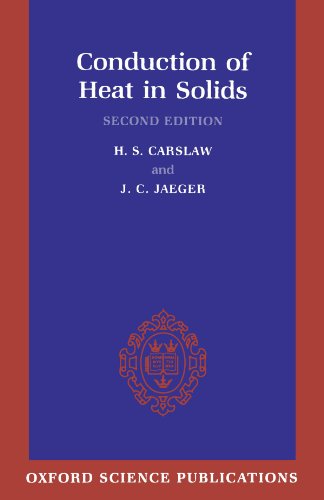Conduction of Heat in Solids book download
Par ponce sara le dimanche, septembre 18 2016, 06:37 - Lien permanent
Conduction of Heat in Solids. H. S. Carslaw, J. C. Jaeger

Conduction.of.Heat.in.Solids.pdf
ISBN: 0198533683,9780198533689 | 517 pages | 13 Mb

Conduction of Heat in Solids H. S. Carslaw, J. C. Jaeger
Publisher: Oxford University Press, USA
All solids (metals and non-metals) are made up of tiny particles called atoms, or groups of atoms called molecules. We don't necessarily need to take a college level course, but a practical understanding and being well-grounded in physics is essential. In all cases the temperature throughout is constant at t=0 The first two are. Conduction is heat loss that happens between two solids that are in contact with each other. I want to be able to compare four different cases. Home made 6x7 tilt shift camera, tominon 127mm f4.7,red filter, Ilford PanF 50, Ilfosol3. Heat always flows from an area of high energy to an area of low energy. Well, in fact there are two mechanisms of heat conduction. Monsieur Be • Conduction of heat in solids, Plage du Centre, Bidart. I merely didn't want to derail your present argument. Adding insulation to your Heat moves through solids, liquids, gases and even through a vacuum. However, there is one important difference between metals and non-metals: metals contain Now, here comes the question: if molecular vibration is common to both metals and non-metals, shouldn't we expect both of them to exhibit similar heat conductivity? Also, there is no reason why to leave the idea the earth is billions of years as related to heat flow behind. When the distance between two solid objects of differing temperatures goes to zero and they come into direct contact, the heat exchange between them is then called conduction. Heat can flow by conduction, radiation or convection. The rate of heat loss on a cross bike will tend to be less than on a road bike, because the speeds are lower. Warm materials always transfer their heat to cooler materials. Improving your home's energy efficiency is one of the best investments you can make, paying tax-free dividends immediately in the form of lower heating costs. Consider the heat conduction equation: dT/dx = K * d2T/dx2 I'm interested in the semi-infinite solid. Thermographers must have a solid understanding of how heat is transferred.